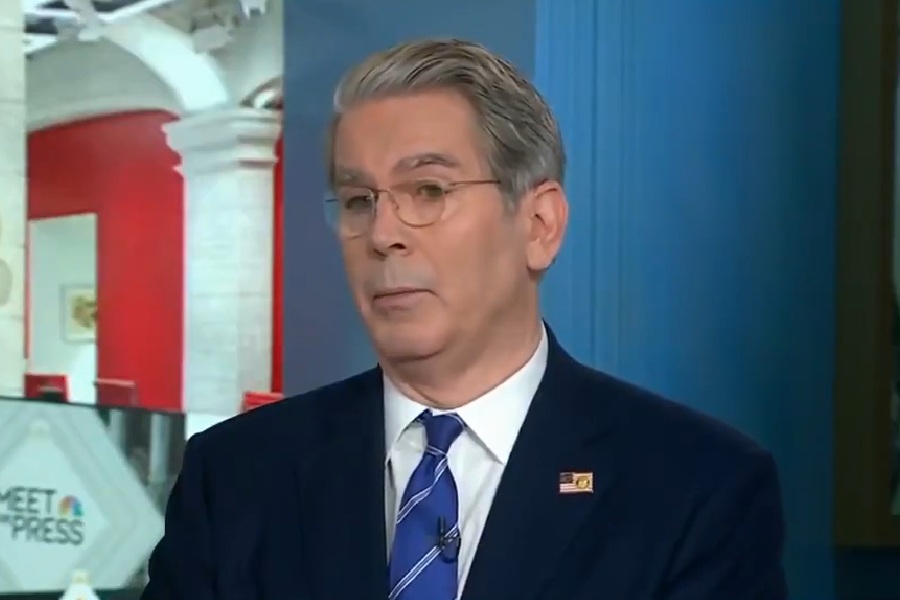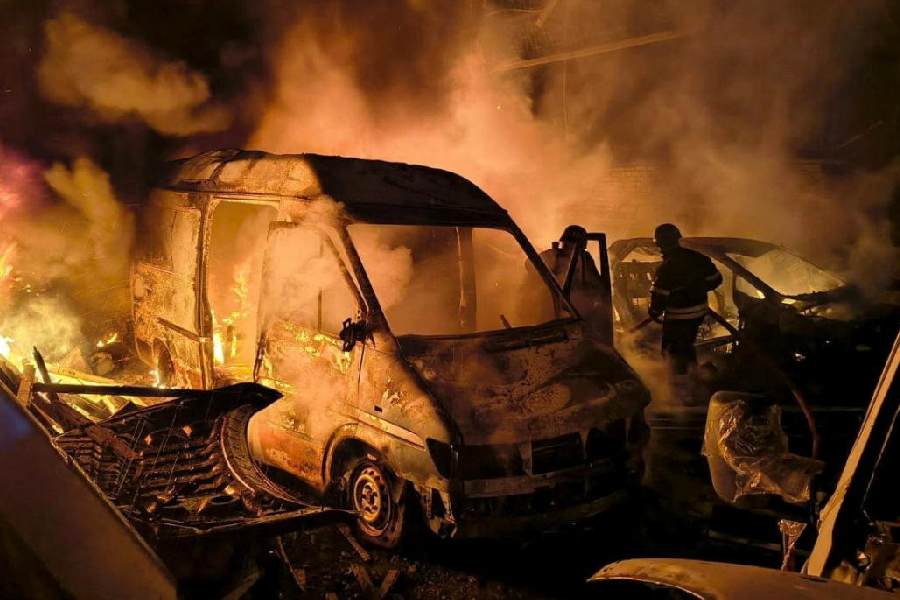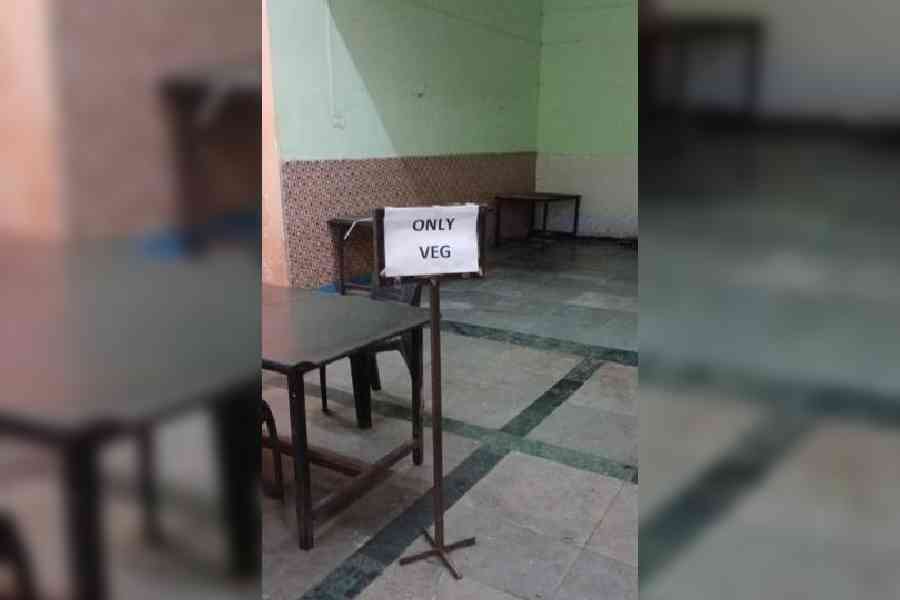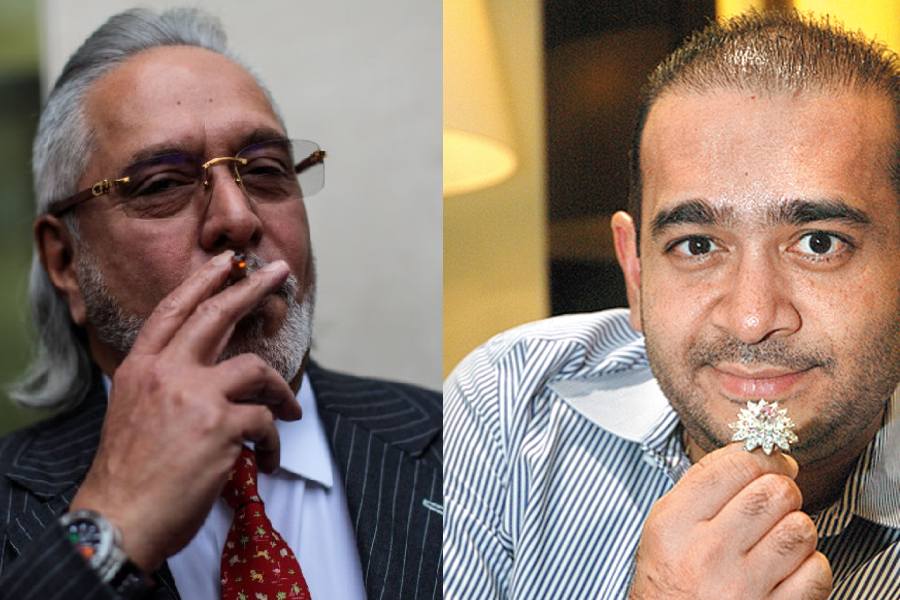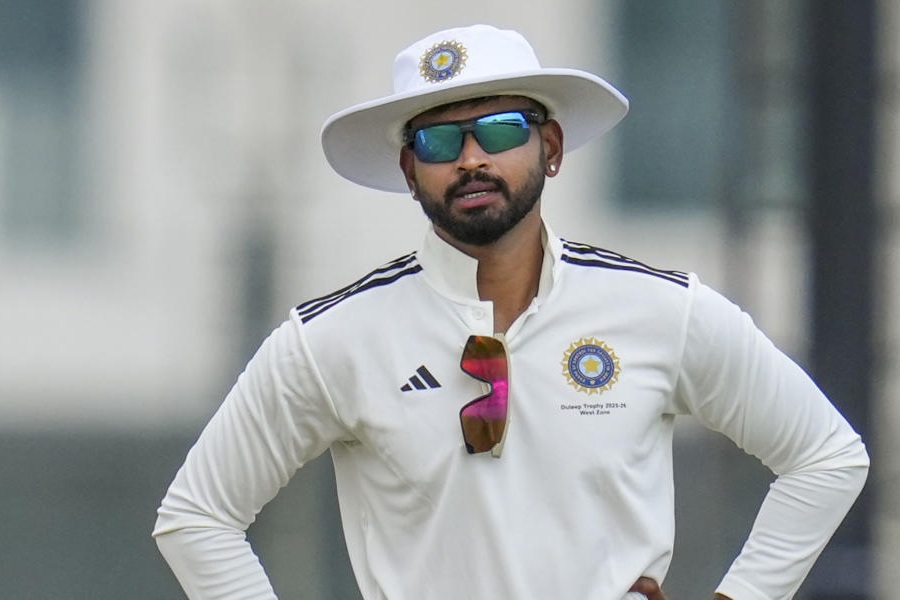 |
Colourful banners sway in the wind, catching the eyes of visitors. One of them, jostling for space among the many heralding events in progress at the Lalit Kala Akademi, announces an exhibition of works of artists such as F.N. Souza and Anjolie Ela Menon. Called the Edge of Reason, the show underlines an artist’s right to the freedom of expression.
Inside the academy — in the heart of Delhi — a storm is brewing. Right now, its members’ freedom of expression seems to have been put on hold — as two groups fight for control of the august body.
Earlier this month, the academy issued a public notice in some major newspapers, stating that the election to its general council, scheduled for April, had been put in “abeyance” till further notification. The notice listed eight reasons — such as violation of election rules and code of conduct — for the postponement.
There is trouble in the world of art. But the officials are mum. “There is a lot that needs to be done, but it’s too early to say anything,” maintains Ramakrishna Vedala, the newly appointed Lalit Kala Akademi secretary.
The Lalit Kala Akademi, established as an autonomous body to promote creative arts such as painting, sculpture and graphics under the culture ministry, is one of the landmarks of Delhi. Set up in 1954, its primary role is to organise conferences and exhibitions and encourage research and publication of journals in the field of art.
The corridors of the academy are now abuzz with whispers. Last month, the chairman, Kalyan Kumar Chakravarty, who joined in mid-February, suspended former secretary Sudhakar Sharma and appointed Vedala — who was till then at the academy’s regional centre in Bhubhaneswar — in his place. “The new chairman seems to be cleaning up the mess,” says an official.
 |
| The research wing of the academy has not functioned for a decade, some of the works of eminent artists are missing, and inventories have not been maintained — Poet and former chairman Ashok Vajpeyi |
What exactly is the so-called mess? Insiders talk about corruption, lack of activity, missing artworks and efforts to hold on to power.
“The entire election process was a manipulative affair as there was no general council meeting last year,” says sculptor Amitava Bhowmick, who was a board member till his term ended last year. He along with a few other artists sent a letter to Chakravarty, pointing out the discrepancies.
In the eye of the storm at present is the Triennale, an international art show held every three years, which hasn’t been organised since 2005. “We have missed the last two Triennales. The former secretary should tell us why that happened,” says poet and former chairman Ashok Vajpeyi, under whose regime Sharma had been suspended — but reinstated soon thereafter by the culture ministry.
The 12th Triennale is now proposed to be held next year, but there are a host of other problems too.
Vajpeyi says that the research wing of the academy has not functioned for a decade, some of the works of eminent artists are missing, and inventories have not been maintained. Artist studios in Garhi in Delhi have been “illegally” occupied, he adds.
“As a chairman, I wanted to start many new initiatives and look into all these matters. But the then secretary never complied,” says Vajpeyi. “And elections were always a contentious issue. Not a single outstanding artist contests the elections, proving the mediocrity of the process,” stresses Vajpeyi, who was chairman from 2008 to 2011.
Under Vajpeyi’s tenure, the ministry had appointed a high-powered committee headed by artist Krishen Khanna to recommend amendments to its constitution. The committee, which submitted its report in 2011, is yet to hear from the ministry.
The committee had recommended that the current election process to the general council be scrapped. “The primary objective of the general council is to ensure the smooth functioning of the Akademi. This can be achieved only by reducing the number of people on the council,” says Khanna. “Members should be nominated rather than elected so that the artists do not waste time in canvassing,” he adds. At present, the general council has 15 elected members.
Bangalore-based artist Balan Nambiar, who was the acting chairman of the body for six months after Vajpeyi, holds that the academy seldom adopts any of the recommendations proposed over the years. “The Khanna Committee report is languishing, as are many other similar reports,” he says.
Nambiar has written several letters to the ministry and to the Prime Minister highlighting all this. “Though I have suggested many recommendations, practically nothing has ever been implemented,” he says.
One of the biggest controversies relates to missing artworks. The academy’s main asset, apart from the building and the library, is a collection of over 6,000 pieces of art. In a letter to Sharma, Nambiar, when he was the acting head, had referred to serious lapses in maintenance. He had said that a committee formed in 2004 to check the upkeep of artworks had found several works — including those of M.F. Husain, J. Swaminathan and Somnath Hore — missing. Several artworks were also damaged in transit while being sent to regional centres.
Insiders believe that some of these problems can be sorted out if the election process — which has a budget of Rs 1 crore — is cleaned up. They claim that at present votes are “bought” by some members in return for favours such as awards and space for exhibition in the gallery.
“Artists of no repute or talent are awarded by the Akademi. On what basis are they chosen for the awards or scholarships? It’s a case of you scratch my back, and I scratch yours,” says a prominent art curator on the condition of anonymity.
 |
| Lalit Kala Akademi is in a mess right now, both financially and politically — Artist Anjolie Ela Menon |
Nambiar believes that the notification for abeyance is a “positive” signal. “The elections held in the past were a failure. The new chairman will have the task to clear the debris and he has already begun his task,” he says.
Not everybody believes that the new set-up spells goods news. “On what basis has the democratic process been suspended,” asks K.R. Subbanna, former vice-chairman. He, along with several artists including Jai Zharotia, has made a representation to the President, Prime Minister and the culture ministry against the “arbitrary and illegal decision” to postpone the election. “It is against the Constitution,” Subbanna says.
Sharma refuses to comment on any of the allegations. He will defend himself and refute the allegations when the time comes, he says.
Meanwhile, most members of the artists’ community are waiting and watching. “The Akademi has had its ups and downs. I have stayed away from it for a long time due to all the internal politics,” says artist Anjolie Ela Menon. “It’s in a mess right now, both financially and politically,” she adds.
But is anybody ready to clean up the Augean stables?
The Art Row
 |
Elections: The general council elections have been put in ‘abeyance’ for various reasons, including violation of election rules
Undue favours: The art fraternity accuses the Akademi of granting scholarships and awards in lieu of votes
Missing artworks: No proper inventory or records are maintained, artworks have gone missing or have been damaged in transit
Garhi studio: The Garhi studio equipped with modern facilities and expensive equipment, usually rented out to artists for a nominal fee, has been illegally occupied by several artists, some for the last 30 years
No Triennale and exhibitions: The last Triennale was held in 2005 and no exhibition of international repute has been organised by the Akademi since 2003


